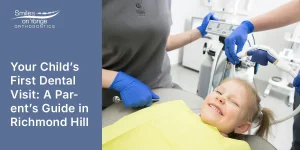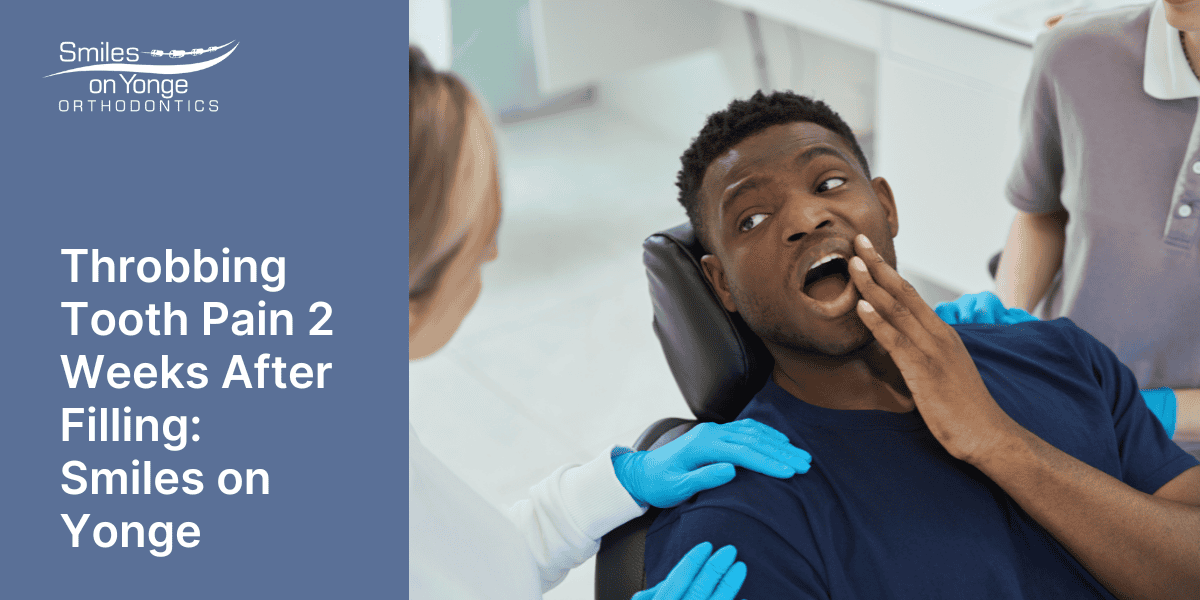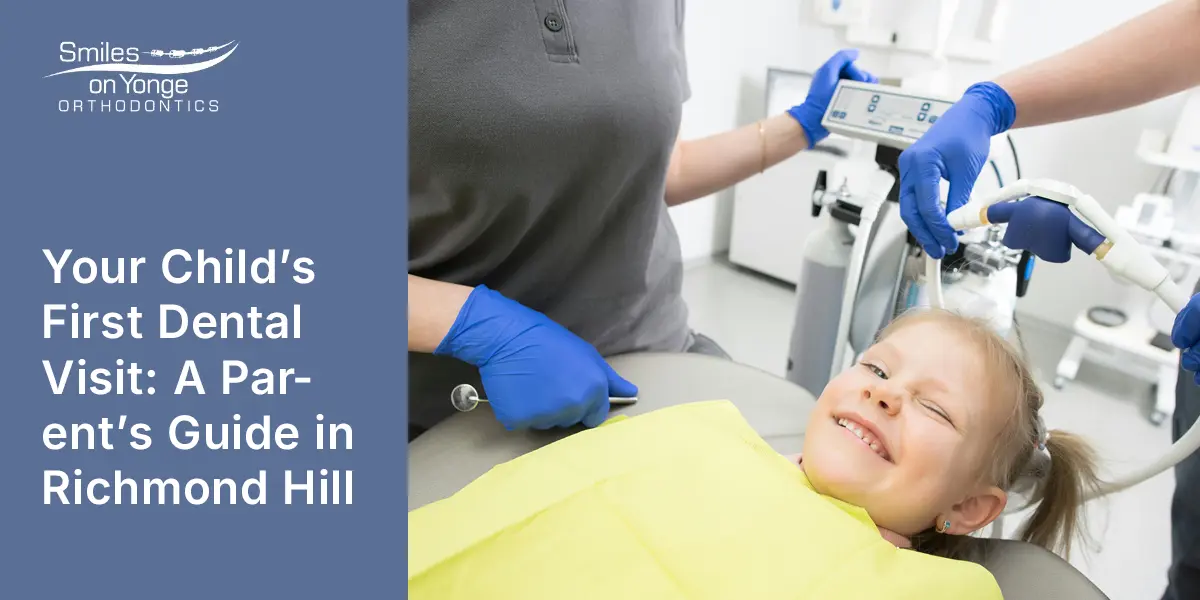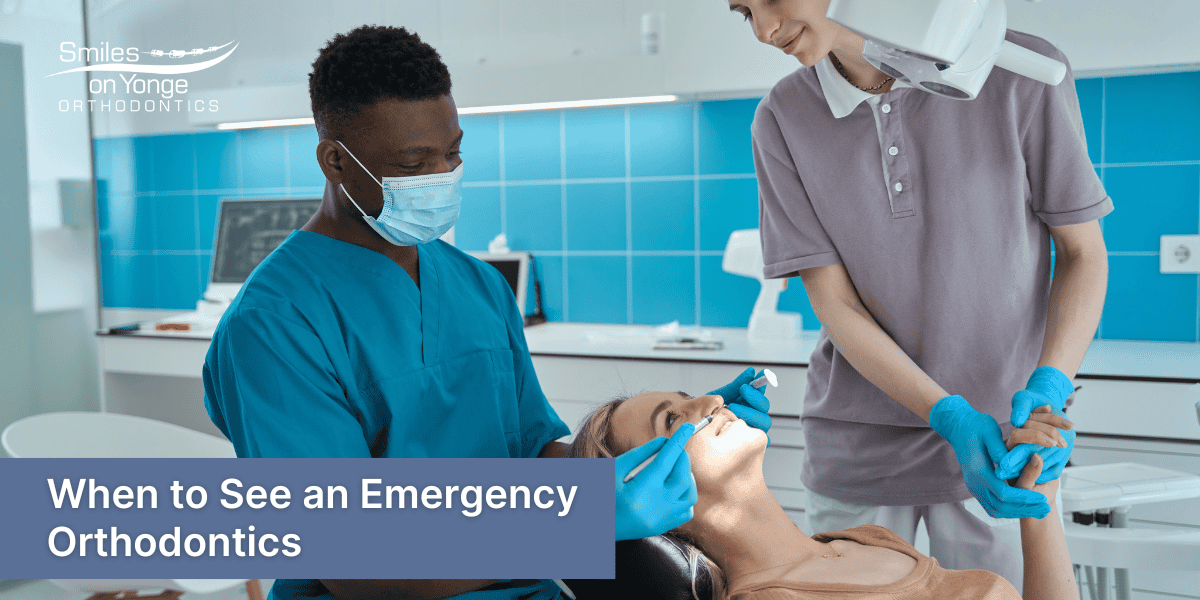
BLOG
Throbbing Tooth Pain 2 Weeks After Filling: Smiles on Yonge

Question: I have throbbing tooth pain 2 weeks after filling. What should I do?
Answer: Experiencing throbbing tooth pain two weeks after a filling is abnormal. It could be an indication of an underlying issue, like an infection or a problem with the filling. It’s essential to contact your Richmond Hill Orthodontics provider for a thorough examination.
Question: What could be causing throbbing tooth pain after a filling?
Answer: Several factors can contribute to throbbing tooth pain after a filling, including:
- * Infection: Bacteria might have entered the tooth through a crack or gap in the filling, leading to an infection.
- * Bite problems: If the filling is too high, it can cause your teeth to bite together improperly, leading to pain.
- * Sinus congestion: Sinus pressure can sometimes mimic tooth pain.
- * Gum disease: Underlying gum disease can exacerbate tooth pain.
Question: How long should tooth pain last after a filling?
Answer: Minor discomfort for a few days after a filling is normal. However, recurring throbbing tooth pain for two weeks is not typical and requires a professional evaluation.What To Do for Tooth Pain After Filling
Question: Can I take over-the-counter pain relievers for throbbing tooth pain?
Answer: Over-the-counter pain relievers can temporarily relieve you of the pain, but to address the underlying problem, you must seek other options. Therefore, seeing an Orthodontic provider for a proper diagnosis and treatment is essential.
Question: Should I be worried about throbbing tooth pain after a filling?
Answer: While it’s natural to be concerned about throbbing tooth pain, remaining calm and seeking professional help is important. Early intervention can help prevent future complications.
Question: How can an orthodontic provider relieve throbbing tooth pain after a filling?
Answer: Your Richmond Hill Orthodontics will conduct a comprehensive mouth examination to determine the problem’s severity. Treatment options may include:
- * Removing and replacing the filling
- * Root canal treatment
- * Antibiotic prescription (if an infection is present)
- * Adjusting the bite
Question: How can I prevent throbbing tooth pain after a filling?
Answer: Minimize the risk of tooth pain after a filling by practicing good oral hygiene and avoiding biting hard objects.When to See an Emergency Orthodontics
Question: When should I see an emergency Orthodontics for tooth pain after a filling?
Answer: While minor discomfort is normal after a filling, certain situations warrant immediate dental attention. If you experience severe, throbbing pain that doesn’t subside, swelling, difficulty opening your mouth, or signs of infection like fever or lousy taste, contact an emergency Orthodontics immediately.
Question: What are the signs of a dental emergency after a filling?
Answer: Common signs of a dental emergency after a filling include:
- * Severe, persistent pain
- * Swelling in the face or jaw
- * Bleeding that won’t stop
- * Difficulty opening your mouth
- * Fever or chills
If you notice any of these symptoms, seek emergency dental care promptly.
Types of Fillings and Their Impact on Tooth Sensitivity
Question: Can the type of filling affect tooth sensitivity?
Answer: Yes, the filling material can influence tooth sensitivity. Tooth-coloured composite fillings are generally less likely to cause sensitivity than amalgam fillings. However, individual reactions can vary.
Question: What are the different types of fillings?
Answer: The primary types of fillings include:
- * Amalgam fillings: These are silver-coloured fillings made from a mixture of metals.
- * Composite fillings: Tooth-coloured fillings made from resin material.
- * Gold fillings are durable but less common due to their high cost.
- * Ceramic fillings: These are tooth-coloured fillings made from porcelain.
Your Orthodontics will recommend a suitable filling based on your needs and preferences.
Question: Which type of filling is best for sensitive teeth?
Answer: Composite fillings are often preferred for sensitive teeth as they are less likely to change the tooth’s nerve temperature.
However, the best choice depends on various factors, including the cavity’s extent and overall oral health.
Please remember the importance of consulting with your Orthodontics to select the best filling material for your needs.
Preventing Tooth Pain After Fillings
Question: How can I prevent tooth pain after getting a filling?
Answer: While it’s impossible to guarantee complete prevention of tooth pain after a filling, you can take steps to minimize the risk:
- * Maintain good oral hygiene: Brushing your teeth twice a day, floss regularly, and using mouthwash as part of your routine to maintain oral hygiene.
- * Avoid biting hard objects: This can put excessive pressure on your teeth and fillings.
- * Regular dental check-ups: Schedule routine dental exams to monitor the health of your teeth and fillings.
- * Wear a mouthguard: If you grind your teeth, a mouthguard can protect your teeth and fillings from damage.
By following these tips, you can help maintain the health of your teeth and reduce the likelihood of experiencing tooth pain.
Remember, prevention is key to a healthy smile.
Eliminate Painful Smiles with Smiles on Yonge
Recent Posts


Can I Get a New Retainer From a Different Orthodontist? Find Out

Is Invisalign Considered Orthodontics? 7 Reasons Adults Prefer It

Is Orthodontic Treatment Painful for Teens? What They Won’t Tell

Orthodontics 101: Can You Chew Gum With Invisalign?

Dental 101: Does Dental Insurance Cover Orthodontics?

Your Child’s First Dental Visit: A Parent’s Guide in Richmond Hill

Can I Get a New Retainer From a Different Orthodontist? Find Out

Is Invisalign Considered Orthodontics? 7 Reasons Adults Prefer It

Is Orthodontic Treatment Painful for Teens? What They Won’t Tell

Orthodontics 101: Can You Chew Gum With Invisalign?

Dental 101: Does Dental Insurance Cover Orthodontics?

Your Child’s First Dental Visit: A Parent’s Guide in Richmond Hill

Can I Get a New Retainer From a Different Orthodontist? Find Out

Is Invisalign Considered Orthodontics? 7 Reasons Adults Prefer It

Is Orthodontic Treatment Painful for Teens? What They Won’t Tell

Orthodontics 101: Can You Chew Gum With Invisalign?

Dental 101: Does Dental Insurance Cover Orthodontics?
Keep in Touch!
Smiles on Yonge
Monday: 8:00am - 4:00pm
Tuesday: 9:30am - 6:30pm
Wednesday: 8:00am - 4:00pm
Thursday: 9:30am - 6:30pm
Friday: 10:00am - 4:00pm
Saturday: call for availability
Keep in Touch!
Recent Posts

Your Child’s First Dental Visit: A Parent’s Guide in Richmond Hill




Orthodontics 101: Can You Chew Gum With Invisalign?
Contact Us
© All Rights Reserved smilesonyonge.ca
Privacy Policy | Terms of Use | Sitemap



